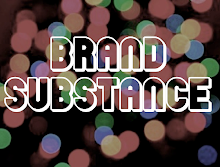Hellmann’s - It’s Time for Real from CRUSH on Vimeo.
More on the theme of food. And also another slightly geeky interest of mine... info-graphics. Data and art together - does it get any better than that :)? Genuinely though I think that lots of the truths about the world around us are hidden by the fact that we can't easily process the underlying information. For example the realities of the journey of all the products that we buy in our supermarkets stay remote and difficult to grasp while we shop. If we could really get a sense of the mass of trains planes and automobiles involved it may not sit right in our minds. This is the point of the film but the interesting thing is that while the previous example below is from a bunch of independent film maker types, this example if from one the of the worlds biggest companies i.e. Unilever. My gut instinct would be that a single jar of Hellmann's is made out of the eggs of chickens from every continent and so it's unexpected that they have the credibility to start an eat local movement with their Mayo as the star. I am also pretty convinced that they have done their homework because the risks of an expose focusing them as per the example below is pretty high.
On a slightly separate note it is here where the idea of green influencers comes in. Mainstream audiences do not adopt behaviours of green niches like the conventional trickle down model. Instead they act like a kind of police (like those that roam the pages of ebay,) to alert us as to whether Unilver are presenting themselves proportionately.
If I were them I'd take a look at the Hellmann's case but then also remember that they are not an island in the Unilever stable. Dove is criticised for Axe's attitude to women. If Hellmann's walks to the supermarket while other brand rock up in a hummer this could back fire. Lets see if it stands up to questioning.
Original ref on adverblog.




